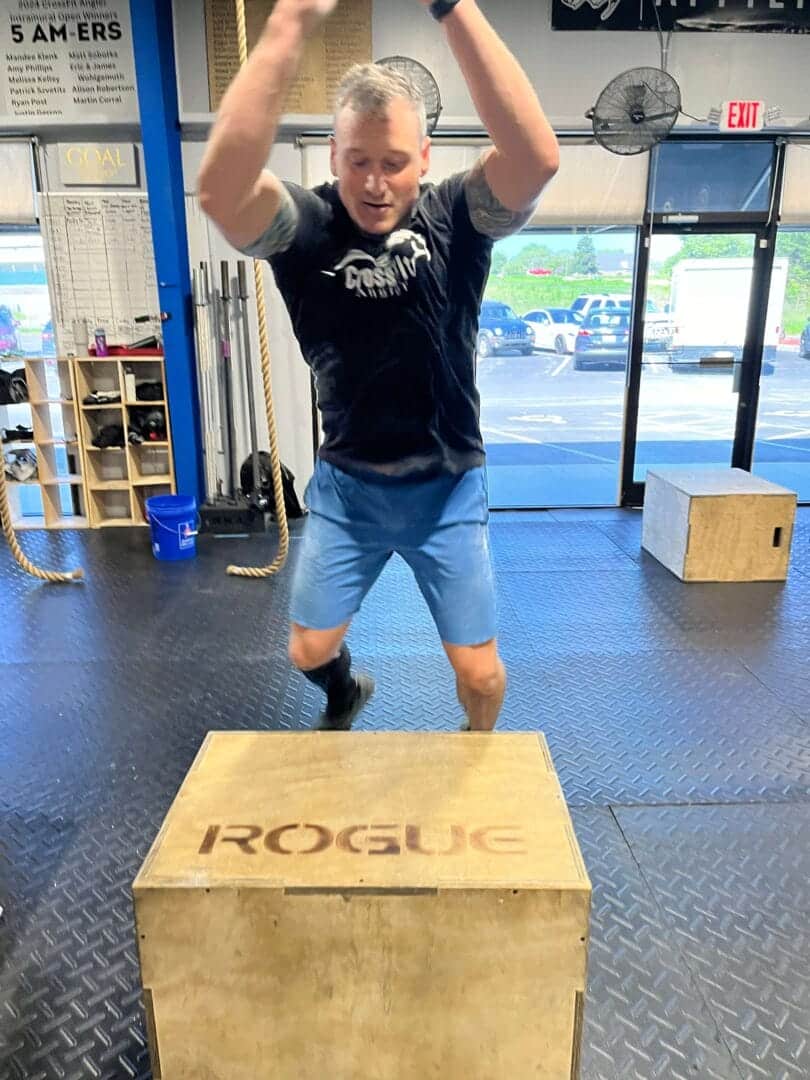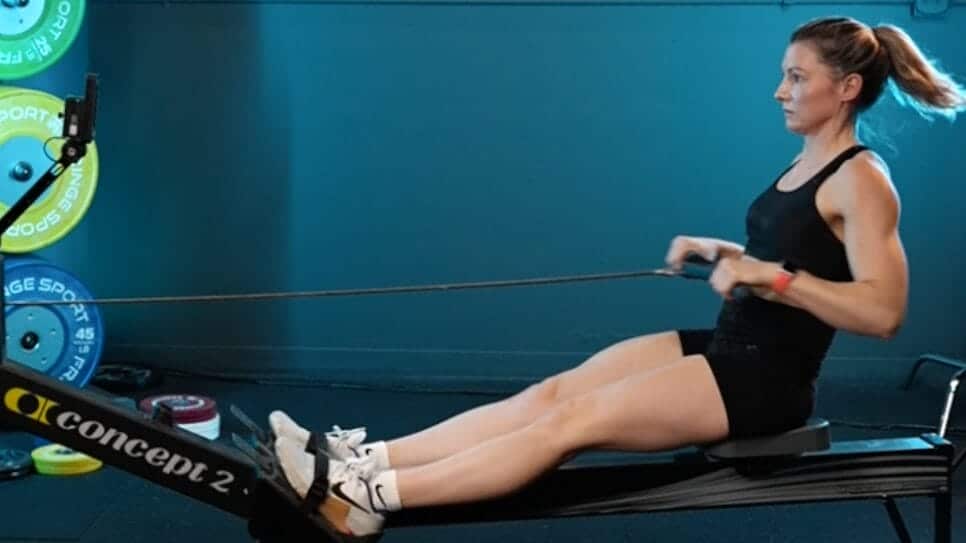When it comes to maximizing your fitness results, CrossFit cardio training is a game-changer. Not only does it help improve your endurance, but it also torches fat, strengthens muscles, and sharpens mental toughness. Whether you’re new to CrossFit or a seasoned athlete, incorporating the right cardio methods into your training can significantly boost your performance.
In this guide, we’ll break down 7 proven CrossFit cardio training techniques designed to help you reach your fitness goals faster. Each method has been carefully chosen to deliver maximum benefits, ensuring you’re always one step ahead in your training journey.
Table of Contents
1. High-Intensity Interval Training (HIIT)
CrossFit cardio training thrives on high-intensity interval training (HIIT), which alternates between short bursts of intense exercise and brief recovery periods. HIIT not only maximizes your calorie burn in less time but also improves cardiovascular fitness and metabolic health. For CrossFit athletes, HIIT can be easily integrated into WODs (Workouts of the Day) to push your limits and elevate your endurance.
Benefits of HIIT in CrossFit:
- Increased fat burn during and after the workout (the afterburn effect).
- Improved cardiovascular and muscular endurance.
- Time-efficient workouts that yield maximum results.
To experience the full impact, try incorporating HIIT sessions into your routine twice a week.
2. Rowing for Full-Body Cardio
When it comes to CrossFit cardio training, rowing is a staple. It’s a low-impact, full-body workout that strengthens your legs, core, and arms while spiking your heart rate. What sets rowing apart is its ability to improve both aerobic and anaerobic capacity. Whether you’re rowing for meters in a WOD or racing the clock in a sprint session, it’s an essential cardio tool.
Key Rowing Workouts:
- 500m row sprints (aim for multiple rounds with short rest periods).
- Rowing as part of a mixed-modal workout to combine strength and endurance.
- Endurance-based rowing sessions, such as 5K or 10K row challenges.
Integrate rowing into your weekly CrossFit schedule to balance strength and cardio.
3. Running Intervals: Speed and Stamina

For many athletes, running is an underrated form of CrossFit cardio training. But sprint intervals and distance runs play a significant role in boosting stamina and speed. Whether you’re training for a CrossFit competition or simply looking to improve your metabolic conditioning, regular running sessions can make all the difference.
How to Optimize Running for CrossFit:
- Sprint intervals: Perform 100- to 400-meter sprints with rest in between to improve speed.
- Tempo runs: Maintain a steady, challenging pace for 20-30 minutes to increase endurance.
- Long-distance runs: Focus on building aerobic capacity with 5K or 10K runs once a week.
By alternating between sprints and long-distance runs, you’ll enhance both speed and endurance, essential for CrossFit’s varied demands.
4. Jump Rope: Simple Yet Effective
The jump rope is a small but mighty tool in CrossFit cardio training. Double unders—where the rope passes under your feet twice in one jump—are a signature CrossFit movement that elevates heart rates and improves coordination. The beauty of jump rope training lies in its simplicity; it’s accessible to all fitness levels and can be done almost anywhere.
Why Jump Rope is Essential for CrossFit:
- Develops coordination and agility.
- Builds lower-body explosiveness and endurance.
- Burns calories quickly, making it a time-efficient cardio workout.
Start by mastering single unders before advancing to double unders, and challenge yourself with sets of 50, 100, or even more.
5. Assault Bike: Maximize Calorie Burn
Few things in CrossFit can test your mental and physical endurance like the Assault Bike. Known for its ability to crush even the fittest athletes, the Assault Bike is a powerful tool for improving cardiovascular endurance and leg strength. Its ability to push you to your absolute limits makes it a must-have in any CrossFit cardio training program.
Top Assault Bike Workouts:
- Tabata intervals: 20 seconds on, 10 seconds off for 8 rounds.
- 5-minute max calorie tests: How many calories can you burn in 5 minutes?
- Assault bike sprints paired with bodyweight movements, like burpees or pull-ups.
Add the Assault Bike to your conditioning days to build incredible stamina and power.

6. CrossFit WODs: Blending Strength and Cardio
One of the greatest benefits of CrossFit cardio training is that it naturally integrates strength and cardio into one seamless workout. Many WODs (like Cindy, Helen, or Murph) are designed to push both your cardiovascular system and muscular endurance at the same time. These workouts challenge your ability to sustain effort across multiple domains, making them a vital component of any CrossFit athlete’s program.
Sample Cardio-Focused WOD:
- 5 rounds for time:
- 400-meter run
- 21 kettlebell swings
- 15 box jumps
- 9 pull-ups
This blend of running, strength, and agility will boost your cardio while also working major muscle groups.
7. Swimming: A Low-Impact, High-Reward Cardio Option
While not typically associated with CrossFit, swimming is an excellent addition to your CrossFit cardio training. Swimming is low-impact, making it ideal for recovery while still providing a full-body workout. It improves cardiovascular endurance, lung capacity, and muscle tone without placing extra strain on your joints.
Swimming Workouts for CrossFitters:
- 10 x 50m sprints with 30 seconds rest.
- 500m or 1000m time trials to test endurance.
- Mix swim intervals with bodyweight exercises, such as push-ups or air squats, for a hybrid workout.
Adding swimming to your routine once a week will provide an excellent cardio boost and improve your recovery.
8. Incorporating Bodyweight Cardio Movements: Efficient and Accessible Workouts

One of the unique strengths of CrossFit cardio training is its ability to deliver high-intensity workouts without relying solely on equipment. Bodyweight movements such as burpees, air squats, and push-ups are essential tools in any CrossFit athlete’s arsenal, providing a powerful, effective way to build cardiovascular endurance while also strengthening the body. Best of all, these movements can be done anywhere, making them perfect for both in-gym sessions and at-home workouts.
9. CrossFit Cardio with Kettlebell Workouts: Strength Meets Endurance
Kettlebells are a versatile and powerful tool in CrossFit cardio training, combining both strength and cardio into one efficient workout. Whether you’re swinging, pressing, or squatting with a kettlebell, these exercises elevate your heart rate while simultaneously building functional strength. Kettlebell workouts are an excellent way to develop power, endurance, and cardiovascular fitness, all of which are critical components of CrossFit.
Why Kettlebell Training Works for Cardio
Kettlebell movements are dynamic and require multiple muscle groups to work together, which makes them perfect for combining cardio and strength. When performed in a high-intensity format, kettlebell exercises like swings, snatches, and cleans rapidly increase your heart rate, delivering a potent cardiovascular stimulus.
Top Kettlebell Exercises for CrossFit Cardio Training:
- Kettlebell Swings: A staple in CrossFit cardio training, the kettlebell swing targets your glutes, hamstrings, and core while delivering an intense cardio challenge. Swinging a kettlebell in high-repetition sets builds muscular endurance and improves your overall conditioning.
- Kettlebell Snatches: This explosive movement engages your entire body, from legs to shoulders, making it an ideal combination of strength and cardio. Snatches, when done in rapid succession, elevate your heart rate and improve your cardiovascular endurance.
- Kettlebell Cleans: Cleans are a great full-body movement that enhances grip strength, power, and cardiovascular conditioning. Incorporating kettlebell cleans into your CrossFit routine helps improve muscle coordination and overall athleticism.
For those new to kettlebell workouts, check out Rogue Fitness for kettlebells and other CrossFit gear.
Kettlebell Workouts for CrossFit Cardio
Here are a few high-intensity kettlebell workouts to add to your CrossFit cardio training regimen. These workouts are designed to challenge your endurance while also building functional strength:
Kettlebell Cardio Circuit #1: The Grinder
- 30 Kettlebell Swings
- 20 Goblet Squats
- 10 Kettlebell Snatches (each arm) Repeat for 4 rounds with minimal rest.
Kettlebell Cardio Circuit #2: Strength and Conditioning
- AMRAP (As Many Rounds As Possible) in 15 minutes:
- 15 Kettlebell Cleans (alternating arms)
- 20 Kettlebell Swings
- 400-meter run
These circuits offer a full-body workout that blends cardio and strength training, essential for overall performance in CrossFit. To enhance your understanding of kettlebell techniques, explore tutorials on the CrossFit official site for proper form and advanced movements.
The Benefits of Kettlebell Cardio for CrossFitters
By incorporating kettlebells into your CrossFit cardio training, you gain multiple benefits:
- Increased Strength and Power: Kettlebells challenge your muscles in ways that typical cardio exercises do not, resulting in greater overall strength.
- Improved Cardiovascular Fitness: Due to their dynamic nature, kettlebell workouts spike your heart rate, delivering effective cardiovascular conditioning.
- Enhanced Mobility and Stability: Kettlebell exercises improve joint mobility and stability, making you more agile and better prepared for the diverse challenges in CrossFit.
For more CrossFit kettlebell workouts and tips, visit WODwell, where you’ll find a wide variety of kettlebell-based WODs to improve both strength and cardio.
Integrating kettlebell workouts into your CrossFit cardio training routine is a proven method to boost both strength and endurance. Whether you’re working on your swings, cleans, or snatches, kettlebells are an effective tool that can be adapted to any fitness level. By consistently incorporating these exercises, you’ll improve your overall fitness and become more adept at tackling even the most challenging CrossFit WODs.
For recovery and mobility exercises after a kettlebell workout, explore MobilityWOD to ensure your body stays flexible and injury-free.
Why Bodyweight Cardio Movements Are Critical for CrossFit
Bodyweight exercises are a cornerstone of CrossFit cardio training because they develop functional strength and endurance simultaneously. Movements like burpees, jumping lunges, and mountain climbers elevate your heart rate quickly, driving metabolic conditioning while engaging multiple muscle groups. This not only burns calories efficiently but also improves your overall athleticism, making you more prepared for the diverse challenges presented in CrossFit WODs.
Top Bodyweight Cardio Movements for CrossFit:
- Burpees: Burpees are a full-body exercise that works your chest, arms, legs, and core, all while driving your heart rate through the roof. Whether incorporated into a WOD or performed as part of an interval circuit, burpees are a simple yet brutal way to build cardio endurance.
- Air Squats: While squats are traditionally seen as a strength-building exercise, air squats performed in high-repetition sets can be incredibly effective for cardio conditioning. These squats engage your entire lower body, from your quads to your glutes, and when done at speed, they increase your heart rate and burn calories fast.
- Mountain Climbers: Mountain climbers offer an excellent combination of cardio and core training. This dynamic movement builds shoulder stability, core strength, and cardiovascular fitness, making it a versatile addition to any CrossFit cardio routine.
Bodyweight Cardio Workouts for CrossFitters
To make the most of these bodyweight movements, try incorporating them into short, intense circuits or longer endurance-focused workouts. Here are a few sample routines that can be done in the gym or at home, without the need for equipment:
Bodyweight Cardio Circuit #1: The Burnout
- 50 Air Squats
- 40 Mountain Climbers (per side)
- 30 Jumping Lunges (per side)
- 20 Burpees
- 10 Push-Ups Repeat for 3 rounds, resting 1 minute between rounds.
Bodyweight Cardio Circuit #2: Speed and Endurance
- 5 rounds for time:
- 20 Jump Squats
- 15 Burpees
- 10 Push-Ups
These circuits are designed to keep your heart rate elevated throughout the workout, ensuring you get the most out of your CrossFit cardio training without needing any equipment. By focusing on high-rep bodyweight movements, you’ll improve both aerobic and anaerobic endurance while building functional strength that translates directly into improved CrossFit performance.
Combining Bodyweight and Strength Movements

One of the most effective ways to enhance your CrossFit cardio training is by combining bodyweight exercises with traditional strength movements. For example, mixing in air squats with kettlebell swings or pairing burpees with deadlifts can create a well-rounded workout that boosts both your cardiovascular fitness and muscular endurance.
Sample CrossFit WOD: Strength Meets Cardio
- 5 rounds for time:
- 10 Deadlifts (225/155 lbs)
- 15 Burpees
- 20 Air Squats
- 25 Push-Ups
This workout challenges your body from multiple angles, ensuring that you’re building strength while keeping your heart rate high. By incorporating both bodyweight and loaded movements, you can develop a balanced fitness profile that is well-rounded and capable of handling CrossFit’s most demanding workouts.
Scaling Bodyweight Cardio Movements for All Levels
One of the greatest benefits of using bodyweight exercises in CrossFit cardio training is that they can be easily scaled to suit any fitness level. Whether you’re a beginner just getting started with CrossFit or an experienced athlete looking to push your limits, bodyweight movements can be modified to match your abilities.
Scaling Ideas for Beginners:
- Burpees: Instead of jumping into and out of the plank position, walk your feet back and forward slowly to reduce intensity.
- Air Squats: Perform squats to a box or chair to reduce the depth of the squat if mobility or strength is a concern.
- Mountain Climbers: Slow down the pace or perform the movement with your hands elevated on a bench to reduce pressure on your shoulders and core.
For more advanced athletes, increasing the speed of the movements or adding a weight vest can create additional resistance, intensifying the workout and driving higher levels of cardiovascular demand.
By integrating bodyweight cardio movements into your CrossFit cardio training routine, you can enhance your cardiovascular fitness, improve your muscular endurance, and build functional strength—all without needing any fancy equipment. Whether you’re working out at home, on the road, or in the gym, these exercises provide a flexible and effective way to stay on top of your fitness goals.
Why CrossFit Cardio Training Is Essential for Overall Fitness
CrossFit cardio training isn’t just about improving your endurance or burning fat. It’s about becoming a well-rounded athlete capable of performing at your best across multiple physical domains. By incorporating cardio into your routine, you can increase your VO2 max, build stamina, and improve your overall conditioning. Plus, cardio-focused CrossFit training enhances your mental toughness, enabling you to push through even the most challenging WODs.
If you’re serious about improving your performance, focus on cardio-based workouts at least 2-3 times a week. These sessions will complement your strength work, helping you achieve a balanced fitness level.
FAQ About CrossFit Cardio Training
Q: Is CrossFit cardio training effective for weight loss?
A: Yes, CrossFit cardio workouts burn a high number of calories, which can help with fat loss when combined with proper nutrition.
Q: How often should I do cardio in CrossFit?
A: For optimal results, include 2-3 cardio sessions per week alongside your strength training to build endurance and stamina.
Q: What is the best cardio exercise for CrossFit beginners?
A: Rowing and jump rope are excellent starting points as they are low-impact and easy to learn, but also provide a great cardiovascular workout.
Q: Can CrossFit cardio workouts improve my endurance?
A: Absolutely. The combination of high-intensity movements and varied exercises in CrossFit significantly boosts endurance.
Q: Should I do cardio before or after strength training in CrossFit?
A: It’s best to follow the structure of the CrossFit WOD. Typically, cardio and strength are integrated together, but if separated, either order can be effective based on your goals.
At CrossFit Angier, our cardio training programs are designed to help athletes at every level improve their performance and endurance. Whether you’re just starting your fitness journey or preparing for your next competition, we offer personalized training plans that combine cardio and strength to give you the best results.
Explore more CrossFit workouts and join our community for a personalized fitness experience!
Sign up for your free two-week trial today!



